-

-
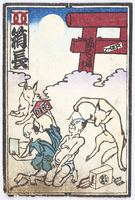
-
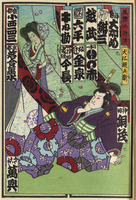
Two-unit votive slip with black border. Depicts large man in purple kimono and robes, sitting on the ground and looking at a woman through see-through curtain. Red slip with black text along upper right edge. Multiple black and white slips bunched in upper half, outliers in lower left corner and lower right edge.
-

Single-unit votive slip with double black border. Image of paper with black text and picture of dead person.
-
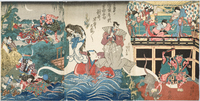
-

Three kappa dancing
-

A kappa dreams of holding a large gourd
-
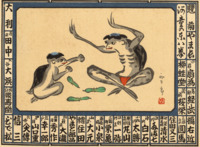
Two kappa playing tōhachiken (a hand game) for cucumbers
-
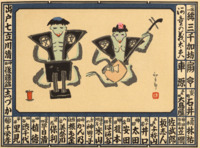
A kappa chanting gidayū accompanied by a female kappa playing a shamisen
-
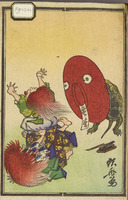
Two-unit votive slip with double black border. Image with turtle on hind legs, covering face with red object; two laughing children. White sticker in upper left with "Kyosai" written in English letters.
-

A daimeifuda for Frederick Starr. The collection contains several copies of this, suggesting he used it frequently. It depicts a kappa carrying an oversized cucumber (a favorite food of kappa). The top right block of writing says “Starr,” the top left block says “Gonzales,” and the smaller block above the kappa’s knee says Beikoku (America).
-
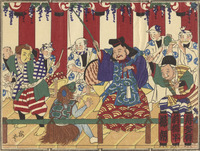
Four-unit votive slip on page. Figures and musicians on stage. Lanterns and wisteria above.
-

-
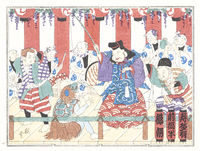
-
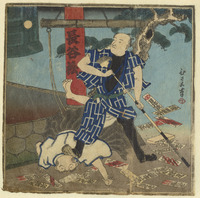
Three-unit votive slip with double black border. Two men with votive slips on ground. Tree, night.
-
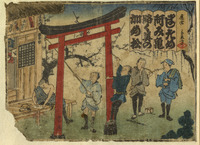
Four-unit votive slip with double black border. Men outside with red gate and flowering plum trees. Slips with black text in upper right corner.
-
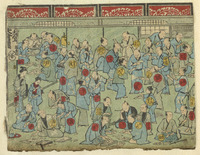
Four-unit votive slip with partial black border. Image of men and women at larger nōsatsukai meeting. Stained and torn bottom edge.
-
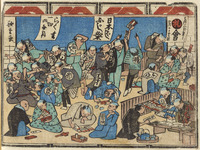
Four-unit votive slip with double black border. Lively scene with many male figures examining and exchanging votive slips. Blue is dominant color.
-

-
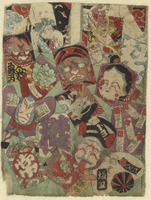
Votive slip with no border. Collage of faces and text.
-

This slip is part of a series based on iroha karuta, a card-matching game linked to the Japanese syllabary. In its orthodox form, one set of cards would each have a poem on it beginning with a different syllable. Another set of cards would have that syllable accompanied by an illustration. The picture-cards would be scattered on the floor, and one person would read the poem while other players scrambled to find the matching card. In this case, instead of a poem the lower card contains a phrase having to do with senjafuda or one of the members of the ren. Here it’s Ōta Setchō, the name of a senjafuda participant. The picture on the top card is of an oni, which of course begins with the same syllable as Ōta. The match of image to name entails a playful suggestion that Setchō himself is an oni – in this case, a rather dumpy-looking ogre with a bulbous red nose and bright red loincloth.
-
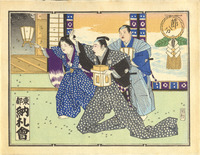
Four-unit votive slip with double black border. Scene with three people. White slip with black text in lower left corner.
-
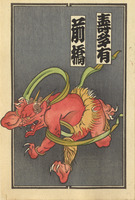
The two daimei read “Starr” and “Maebashi” (Starr’s companion). This slip may be a reference to the traditional spring ritual of scattering toasted beans to chase away demons; other slips in the Starr collection show demons being chased away with senjafuda instead of beans.
-
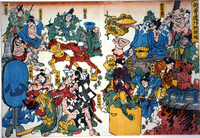
-

























